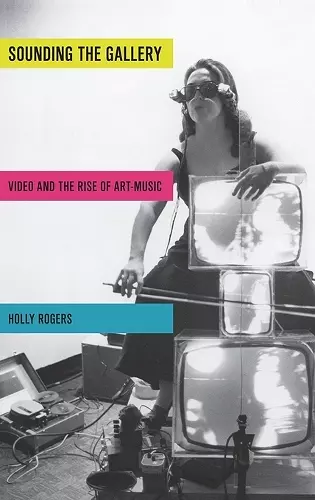Sounding the Gallery
Video and the Rise of Art-Music
Format:Hardback
Publisher:Oxford University Press Inc
Published:23rd May '13
Currently unavailable, and unfortunately no date known when it will be back
This hardback is available in another edition too:
- Paperback£41.49(9780199861422)

Sounding the Gallery explores the first decade of creative video work, focusing on the ways in which video technology was used to dissolve the boundaries between art and music. Becoming commercially available in the mid 1960s, video quickly became integral to the intense experimentalism of New York City's music and art scenes. The medium was able to record image and sound at the same time, which allowed composers to visualize their music and artists to sound their images in a quick and easy manner. But video not only provided artists and composers with the opportunity to produce unprecedented forms of audiovisuality; it also allowed them to create interactive spaces that questioned conventional habits of music and art consumption. Early video's audiovisual synergy could be projected, manipulated and processed live. The closed-circuit video feed drew audience members into the heart of the audiovisual experience, from where they could influence the flow, structure and sound of the video performance. Such activated spectatorship resulted in improvisatory and performative events in which the space between artists, composers, performers and visitors collapsed into a single, yet expansive, intermedial experience. Many believed that such audiovisual video work signalled a brand-new art form that only began in 1965. Using early video work as an example, this book suggests that this is inaccurate. During the twentieth century, composers were experimenting with spatializing their sounds, while artists were attempting to include time as a creative element in their visual work. Pioneering video work allowed these two disciplines to come together, acting as a conduit that facilitated the fusion and manipulation of pre-existing elements. Shifting the focus from object to spatial process, Sounding the Gallery uses theories of intermedia, film, architecture, drama and performance practice to create an interdisciplinary history of music and art that culminates in the rise of video art-music in the late 1960s.
Sounding the Gallery stands as impressive achievement which rescues the musical dimensions of video work, whilst also convincingly and thickly arguing for its intermedial, aesthetically pioneering audiovisuality, and its performative innovation. * Stephen Graham, MSMI *
[Rogers] breadth of knowledge offers readers from various backgrounds a concise yet insightful look at the beginnings of video art-music. With its emphasis on the musical aspects of this genre, her work provides a vital contribution to scholarship on video art-music of the 1960s and 1970s. * Megan Woller, Journal of Musicological Research *
a lucid and thorough introduction * Louise Gray, The Wire *
this study of the rise of art-music is both comprehensive and immensely readable ... Rogers knows the field inside and out, and she writes in an accessible style that makes her book attractive as a course text. Authoritative, concise, and extremely well thought out, this is the key book on this subject at this time. * W. W. Dixon, Choice *
ISBN: 9780199861408
Dimensions: 160mm x 236mm x 18mm
Weight: 550g
256 pages